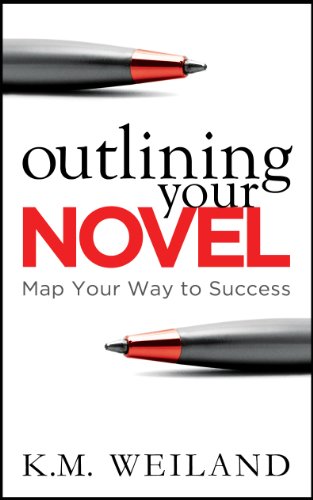Next step! Story beats. If you are new to this series, check out part One, Two, and Three here!
I gave this process six days because it is my favorite part, but it is also quite intensive. I am in love with Save the Cat! story beats.
I have never had such an easy time writing a story as with Save the Cat!. I think it might be the best book on writing I have ever read (second only to Bird by Bird by Anne Lamott- Click here to listen to me geek out about it). I mean the subtitle does say “The Last Book on Writing You Will Ever Need”. But I didn’t know they would mean it until I read it. It’s a fantastic resource. Every writer should read it. Buy it here. Now. Okay- that’s my TEDtalk.
Evernote has a nice template for these beats (Not branded as Save the Cat, but they are the same beats). They have several other templates that are great for writers (Character Sheets – Setting).
In all honesty, Beginning, Middle and End doesn’t really cut it for me. I need specifics. But if a loose structure works for you, then absolutely go for B-M-E.
Another way to think of it is Set Up, Build Up, Pay Off instead of Beginning Middle and End. The reason why is because Set Up, Build Up, Pay Off are verb phrases. It is a directive. B-M-E is WHAT you should write, and S-B-P is HOW to write the story and how the characters should move in the landscape of your story. (BME are just simple nouns, and who needs those!)
Another great outlining tool is the Hero’s Journey. This is applicable to most fiction, it’s a proven storytelling method that’s as old as Gilgamesh (no seriously).
The Hero with a Thousand Faces is *the* book on the Hero’s Journey if you want to pick up a copy. This is not a “writing” book, but rather an analysis of myths from cultures all over the world. And what are myths if not stories?
Joseph Campbell identifies the similar “tropes” if you will of these myths and categorizes them into a mythic storytelling structure that you can use as a writer. The book is more challenging to read because of how much history and psychology that goes into the book. But I think it has a well-earned spot on any writer’s bookshelf.
And if you are still struggling with story beats, then I highly recommend heading over to the queen of story structure’s blog helpingwritersbecomeauthors.com.
I think I found K. M. Weiland through researching the Hero’s Journey. I follow her blog devotedly, and I recommend joining her mailing list to get updates on her blog. Everything she posts is quality. She is super helpful, informative, and relevant. I especially loved her 22- part blog series on Marvel movie’s story telling mastery. Even if you don’t like Marvel we all want the secret sauce that produces as devoted of an audience as Marvel Fans.
I also read her book on Outlining and it is fantastic (My workbook is coming in the mail soon! ). She really likes to break apart plot structure and analyze all the little bits which appeals to me so hard.
Next time, we will talk about how to fine tune & perfect your outline for maximum writing efficiency!



